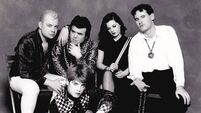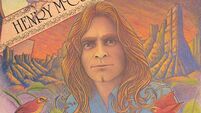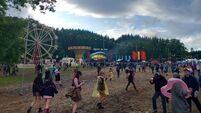Ireland In 50 Albums, No 5: I Am The Greatest, by A House

Dave Couse, centre, and the other members of A House, pictured in 1991. (Picture: Martyn Goodacre/Getty Images)
Thirty-two years ago, lightning struck Irish music three times in the space of a few months. It was 1991 – the year of Nirvana and grunge. But also of three singular records from Ireland. U2’s Achtung Baby. Loveless by My Bloody Valentine. And I Am The Greatest by A House.
“I Am The Greatest is compared a lot to Loveless and Achtung Baby. All three albums came out in 1991, which is really weird,” says A House frontman Dave Couse. “Those three albums are now in the top three of the greatest Irish albums. They’re always talked about as a collective phenomenon.”







